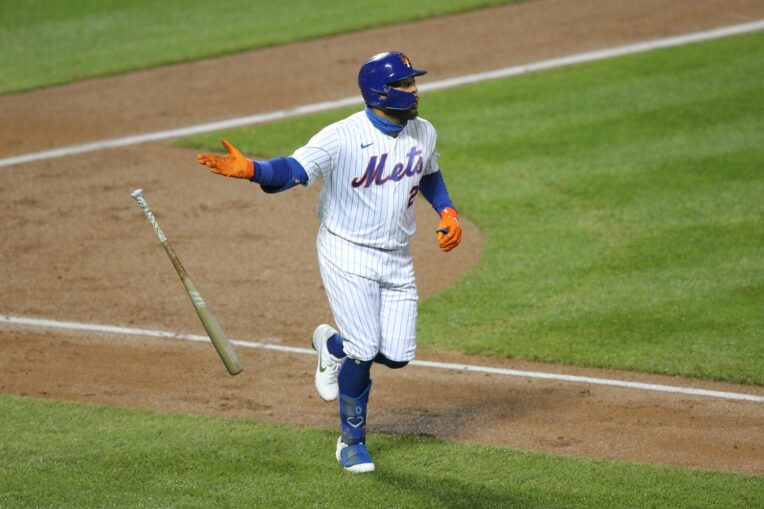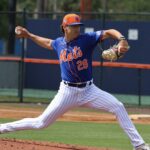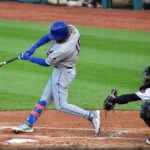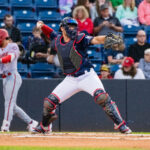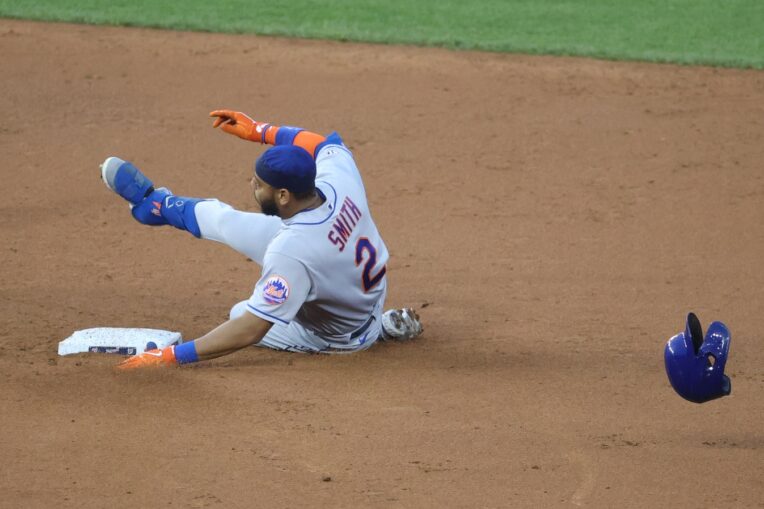
Despite postponements and an inconsistent schedule, the New York Mets have found a way to start well enough to be at the top of the National League East three weeks into the season. If we’re going to be specific, the “way” they’ve done this is to lean heavily on the pitching staff, and more specifically, the starting rotation (Wednesday night’s performance notwithstanding).
While the Mets’ pitching staff has generally produced like one of the top units in baseball, the offense has been playing the opposite game. This group of hitters will likely be among the league’s better lineups when all is said and done, but it’s just not happening right now. New York’s team wRC+ of 98 through Wednesday’s action ranks them right around the middle of the pack.
As one can imagine, there have been just a few bright spots on offense in the early portion of the season. Dominic Smith‘s 81 wRC+ currently ranks fourth on the team among qualified hitters, and he’s paired that with a .233/.261/.395 line. As we wait for the offense to come alive — and specifically thinking about the power portion of the program — Smith is second on the squad with two homers and six RBI through 46 plate appearances.
Is he primed to go on a tear at any moment, though? Some of his peripheral stats tell us that may be the case.
Statcast Telling a Different Story
On the surface, Smith’s start to 2021 seems mostly pedestrian — not great, but not awful, just meh. If we take a peek at some of his Statcast numbers, though, they’re looking at things in a different way. Here’s a look at how some of his expected statistics are currently sitting and how it ranks among other hitters in baseball:
— xBA: .329 (top 8% of league)
— xwOBA: .434 (top 8% of league)
— xwOBAcon: .599 (top 3% of league)
To put it plainly, these numbers are obviously all elite, as each one is within the top 10% of the league. With a .276 BABIP in tow, it appears he may be experiencing a bit of tough luck, and that’s definitely the case when looking at last year’s breakout performance.
If we compare and contrast Smith’s batted-ball profile and quality-of-contact between 2020 and what he’s done thus far in 2021, his performance over the last three weeks is at least similar, and in many respects, better than what he accomplished last season.

Comparing a 46-plate-appearance sample with a 199-plate-appearance sample isn’t quite apples-to-apples, but it provides an idea of just how much hard contact Smith has been making without getting the results to match.
Where Can Adjustments Be Made?
As we can see above, Smith’s overall quality of contact is pretty good. When it’s broken down by batted-ball event, though, we can see where some adjustments need to happen that’ll enable some kind of hot streak to begin.
Here’s a brief look at how things have been shaking out when the left-handed slugger is putting line drives, ground balls, and fly balls in play:

Looking specifically at fly balls for a minute, it’s fair to say that Smith is encountering a bit of tough luck since he posted a 60.0% hard-hit rate and 418 wRC+ for that specific batted-ball event last year. Since his line-drive rate has increased to start the year, making solid contact on a more consistent basis will be crucial, and easier said than done.
There have also been a couple of eye-opening numbers in Smith’s performance against certain pitches early on this season. Following Wednesday’s disaster of a game at Wrigley Field, Dom had put together a 285 wRC+ against four-seam fastballs, which is in the same ballpark (pun intended) as what he did last year (208 wRC+). What does jump out is how he’s performed against changeups and sliders, which are the next two most common pitches he’s faced.
He hasn’t recorded a hit or a walk against a changeup yet, leading to a -99 wRC+. While his performance against sliders has been much better, it’s not like a 13 wRC+ is going to get the job done. These are significant to point out because they’re pitches he did very well against in 2020 (163 wRC+ and 147 wRC+, respectively).
Moving Forward
We’re only three weeks into a six-month season, so there’s lots of time to make these adjustments. The small sample size makes certain statistics look much more dramatic than they likely should. However, it’s good information to have with regard to where Smith can improve in order to get hot at the plate.
There are plenty of reasons to be optimistic about him breaking out in the near future, and if he’s able to make some adjustments on the fly, it’ll hopefully happen sooner rather than later. Judging from the Mets’ early returns on offense — despite seeing homers from Pete Alonso and Francisco Lindor Wednesday — they could really use a hot streak from someone in the middle of the order for other hitters to rally around.


